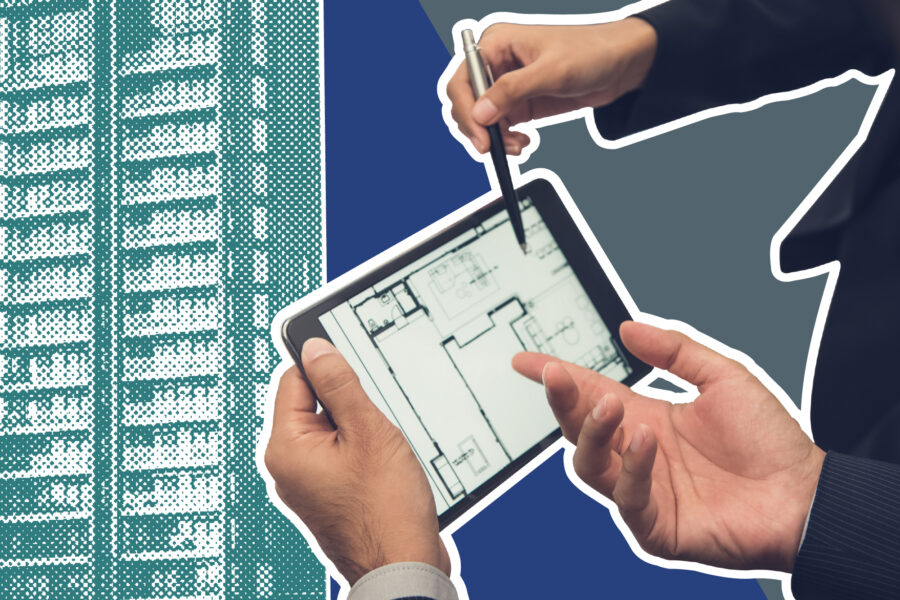The role and responsibilities of accountable persons and principal accountable persons
The Building Safety Act 2022 introduced new roles and legal duties for people and organisations who are responsible for managing building safety risks in high-rise residential buildings (HRBs) in England.
Each HRB in England must have one clearly identifiable accountable person, known as the principal accountable person (PAP). The role of the PAP is significant and necessary to ensure the safety of people living in HRBs.

Accountable persons
An accountable person (AP) is either a person or organisation that owns or is responsible for repairing any of the common parts of the building, or a person or organisation required under the terms of a lease, or by an enactment, to repair or maintain any part of the common parts. Common parts include the exterior and structure, corridors, or lobbies.
Principal accountable persons
All occupied high-rise residential buildings must have one clearly identifiable AP, known as the principal accountable person (PAP) who is responsible for ensuring that fire and structural safety is being properly managed for the whole building.
As well as their duties as an accountable person, the principal accountable person must:
- register existing high-rise buildings with the Building Safety Regulator
- register all new buildings and receive a completion certificate before they are lived in
It is important to remember that accountable persons and the principal accountable person cannot delegate their legal obligations to others. The liability for a building’s safety remains firmly with the accountable persons and principal accountable person.
Identifying the principal accountable person
When buildings have a single accountable person, that organisation or person is also the principal accountable person.
When there are multiple accountable persons, then whoever owns or has a legal obligation to repair the structure and exterior of the building is the principal accountable person. And accountable persons and the principal accountable person can be accountable for the fire and structural safety risks of more than one building.
Typically, an organisation, for example a commonhold association, local authority, or social housing provider is the PAP. However, there are situations where an individual can be the PAP, for example, if they are the building owner or named on the leasehold as being responsible for the repair of the structure and exterior of the building.
If the principal accountable person is an organisation, then someone from the organisation should be the single point of contact. This individual should have authority or duties relating to the safety of the building, but this does not make them the principal accountable person. It is the organisation responsible for the repair of the structure or exterior of the building that is the principal accountable person. The organisation can also name a third party, for example a management company as the single point of contact – but this does not make them the principal accountable person.
The duties of the principal accountable person and the accountable person
All APs must ensure they have effective, proportionate measures in place to manage building safety risks in the buildings, or parts of the building which they are responsible for. In buildings with multiple APs, they must, so far as possible cooperate and coordinate with all other APs to deliver building safety to the residents.
The core duties of an AP revolve around the assessment and management of building safety risks in their HRB. All APs have a duty to take all reasonable steps to:
- put measures in place to prevent building safety risks happening and reduce the severity of any incident that does happen
- report certain fire and structural safety issues or incidents
- engage with residents about the building’s safety and perform duties relating to the resident engagement strategy
- keep, update, and provide information about the building for the building’s safety case
- transfer building safety information to any incoming accountable person
- notify the Building Safety Regulator if there is a change to an accountable person
In addition to assessing and managing building safety risks in their own area of the building, the principle accountable person has additional responsibilities for meeting specific statutory obligations for the building as a whole. They must:
- apply for a building assessment certificate when directed by the regulator and display it in the building
- display a notice in the building information about the APs for the building, including their full contact details and a summary of their roles and duties
- prepare a safety case report containing an assessment of building safety risk carried out by the APs, and steps they have taken to address those risk or reduce the severity of incidents arising from them
- prepare a residents engagement strategy setting out how residents will be involved in building safety decisions’
- establish and operate a mandatory occurrence reporting system to enable information on building safety risk to be captured and reported to BSR
- set up and operate a system to investigate relevant complaints relating to building safety risk or the performance of an APs duties
- keeping, updating and providing information about the building for the building’s safety case

Safety Case Report
The Building Safety Regulator will need to see a demonstration that the building’s safety is being managed properly. This is through what is called the ‘Safety Case Report.’ The safety case report must be provided to the BSR on request.
Gathering all the relevant information for the building is key to enabling a comprehensive safety case report to be compiled. To put together the safety case, the PAP will need to gather information about their building. Some of this may be readily available from information provided by the developer or surveys previously conducted on the building, and from the golden thread of information. The PAP must also notify the Building Safety Regulator about changes to the building’s safety risks and safety case report.
Those organisations and individuals who hold the role of principal accountable person for their high-rise building(s) must fully understand their legal duties and ensure have all the necessary measures in place to deliver on their legal obligations.
Read the additional guidance for preparing a safety case report if you are a PAP.

We’ve published information, that you can download, in our Safety Case Toolkit – Reasonable Steps and Practical Examples. We will continue to add more examples in the future.

Engaging with residents
The PAP must prepare a residents engagement strategy whereby residents and owners of residential units in the building can participate in making building safety decisions. This engagement strategy by PAPs will provide residents with access to more information about the safety of their building, help them to know what changes are being made to their building, how they are consulted on the changes and how it will impact them. It will also provide effective routes for resolution.

We’ve published some case studies, that the PAP can use to help with their residents’ engagement work. We will continue to add new case studies as PAPs share their experiences with us.

Updates from the Building Safety Regulator
Keep up to date with the new regulator with our e-bulletin.